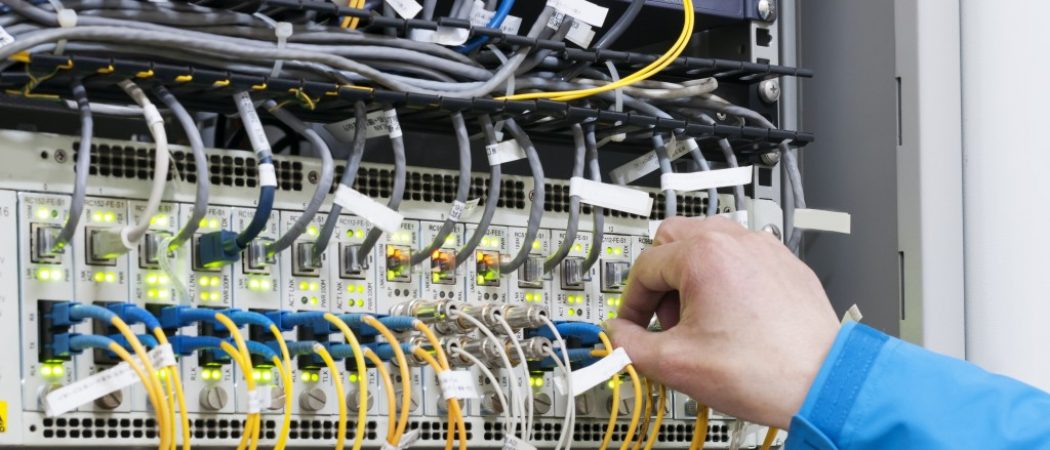"*" indicates required fields
In the age of the internet and big data, businesses must focus on adequately setting up network data wiring as it directly impacts your network. Network data wiring is integral to your IT infrastructure and must be properly installed and maintained to help achieve your enterprise’s objectives. Below is a step-by-step guide on how to approach the network data wiring, how to evaluate your setup, and what the best practices are when it comes to logistics.
Network data wiring refers to the strings and connections transmitting data for a given network. It comprises multiple wires and connectors, which all help form a continuous data communication channel. Wiring ensures that information flows well and takes little time to reach its intended target since it reduces corrupted data.
Ethernet cables are the most common type used for wired networks. Different categories offer different speeds and capacities.
These cables use light to transmit data, allowing for very high speeds and long distances. They come in two main types:
These are often used for cable TV and broadband internet. They have a central conductor, insulating layer, metallic shield, and outer layer. They are less common in modern networks but still used in some setups.
These wires are twisted together to reduce interference. Two main types are:

The network data wiring must be appropriately installed, and only then will it function optimally and with low failure rates. Some defects associated with the poor installation include slow internet speeds and network malfunction. Unlike cables that may interfere with or lose signals, well-installed cables result in high-speed and efficient networks. These cables have a longer lifespan and are not easily affected by damage, which will require less maintenance or rewiring.
A network review is a comprehensive evaluation of the condition of your network or some of its components. Before going further, identify all the underlying application hardware and software and their versions. Analyzing how data flows through the network to determine how it can be utilized and if there is any abnormal interaction. Check the network’s physical state; a cable might be misconnected or torn. The idea is to get a perfect picture of your network and identify weaknesses.
A bottleneck is reached when data is blocked at certain checkpoints, slowing down the processing time. To identify these hot spots, one should choose some network performance parameters such as bandwidth utilization, delay, or packet loss. There are likely areas of the home where the speed is low or devices disconnect often.
Testing and diagnostics help you find and fix specific network issues. Use network diagnostic tools to run various tests on your network setup. Conduct speed tests to measure how fast different network parts are working. Leakage or wastage in the cables’ wiring can be checked using cable testers. Check for lag to see if data takes time to display or is transmitted with a delay. Network analyzers can help you examine data traffic and spot unusual patterns or potential security threats.
To improve your network, you need to work out some fundamental and essential things in detail. Identify the objective you would like to set for your network optimization. This could include higher data transmission rates, increased throughput, lesser delay, or better capacity for future expansion. Also, observe your network activity to gain insight into its utilization. Determine the application usage at its highest and the daily bandwidth consumption.
Cable management is crucial for maintaining an organized network data wiring. Here are some tips:
Adhering to industry standards is critical for ensuring a reliable and efficient network. Here’s why it matters:
Optimizing cable pathways is crucial for maximizing network performance and minimizing maintenance issues. Consider these strategies:
It is critical that your network function as smoothly and efficiently as possible through testing and validation. Once the cables have been placed or installed, all the connections made in the network should be checked to ensure that they work as expected using cable testers and network analyzers. Performance monitoring is another critical aspect that ensures that factors such as bandwidth, latency, and packet loss are monitored and problems are reported. They also require periodic audits to assess the physical condition of cables and equipment.
Network Drops provides top-quality network solutions that help businesses achieve optimal performance and efficiency. By enhancing the quality of cabling, professional installation, and service support, Network Drops guarantees that the network’s functioning complies with present demand and can withstand future requirements. Contact us today to secure dependable network cabling solutions for your enterprise.
Network efficiency involves optimizing data flow. Strategies include reducing unnecessary network traffic (like streaming during work hours), upgrading outdated equipment, and strategically placing Wi-Fi access points to boost signal strength.
Optimizing your connection involves improving data flow and speed. Consider using wired connections for critical devices, turning off unused features on your router, and regularly updating router firmware for security and performance improvements.
Maximizing network utilization involves ensuring efficient use of available bandwidth. Techniques include prioritizing bandwidth-intensive tasks (like video conferencing) during specific times, managing software updates to avoid overloading the network, and using quality service features if available on your router.
Here are some tips: Identify and eliminate bottlenecks (like outdated hardware), ensure proper cable connections, optimize Wi-Fi signal strength, and consider segmenting your network (creating separate networks) for improved traffic management.
QoS (Quality of Service) prioritizes network traffic for specific applications. With QoS enabled, your router can allocate more bandwidth for tasks like video conferencing, ensuring smoother performance even when other devices are using the network.
Scott Fcasni is the driving force behind Shock I.T. Support’s commercial datacomm cabling division, delivering expert solutions that power reliable, high-performance network infrastructures. With extensive experience in structured cabling and a commitment to precision, Scott ensures that every project—whether for small businesses or large enterprises—meets the highest standards of quality and scalability.